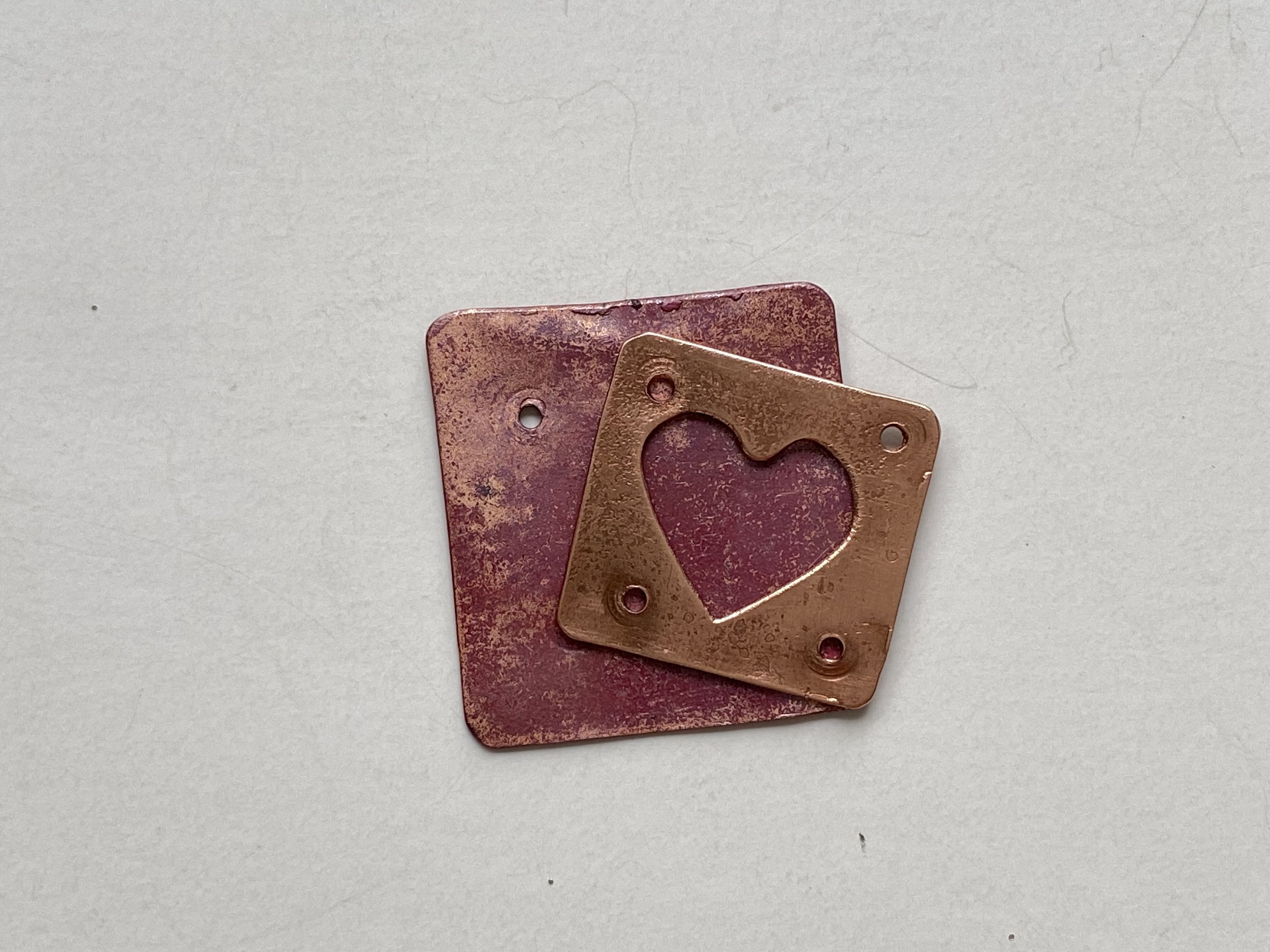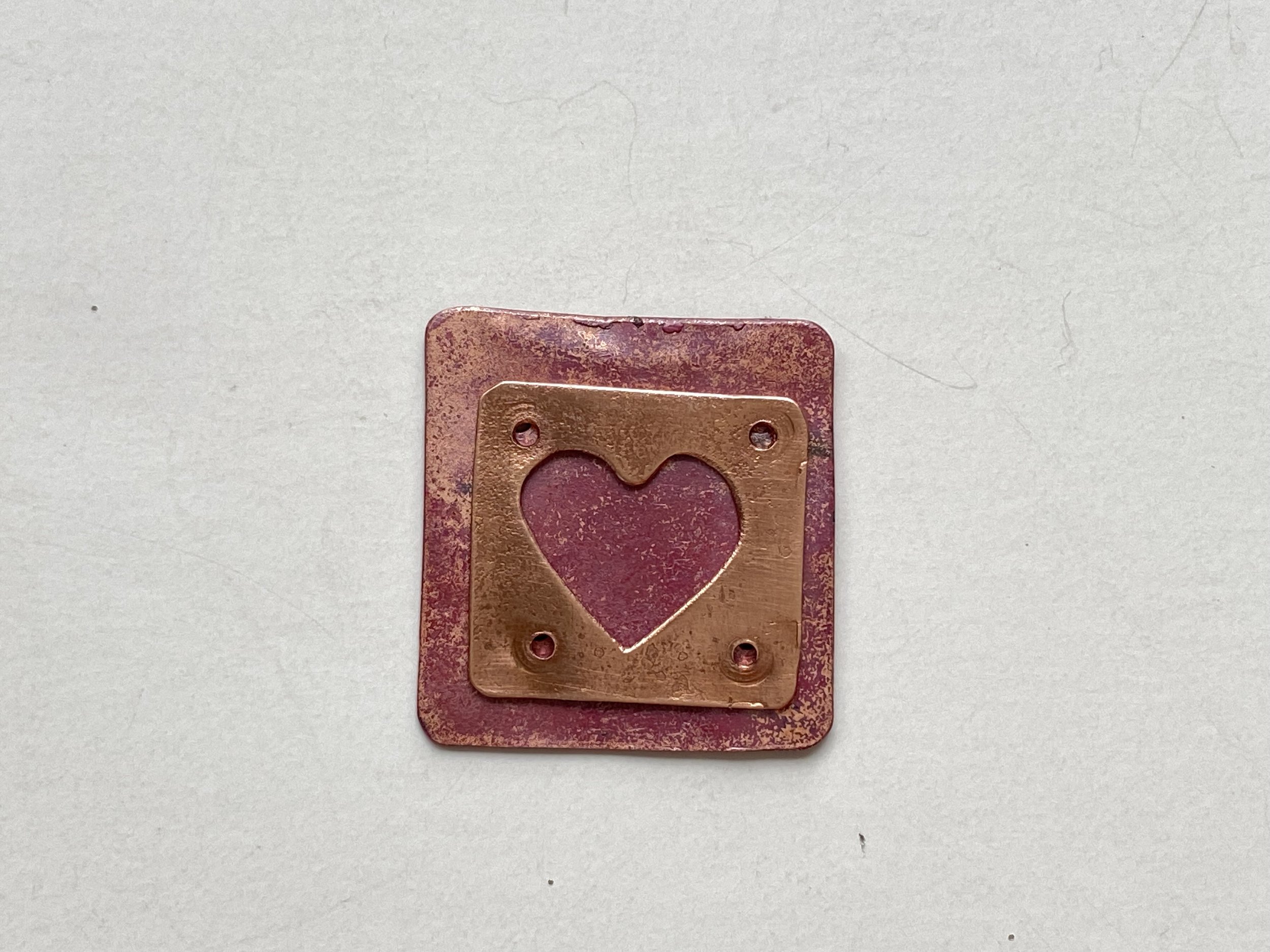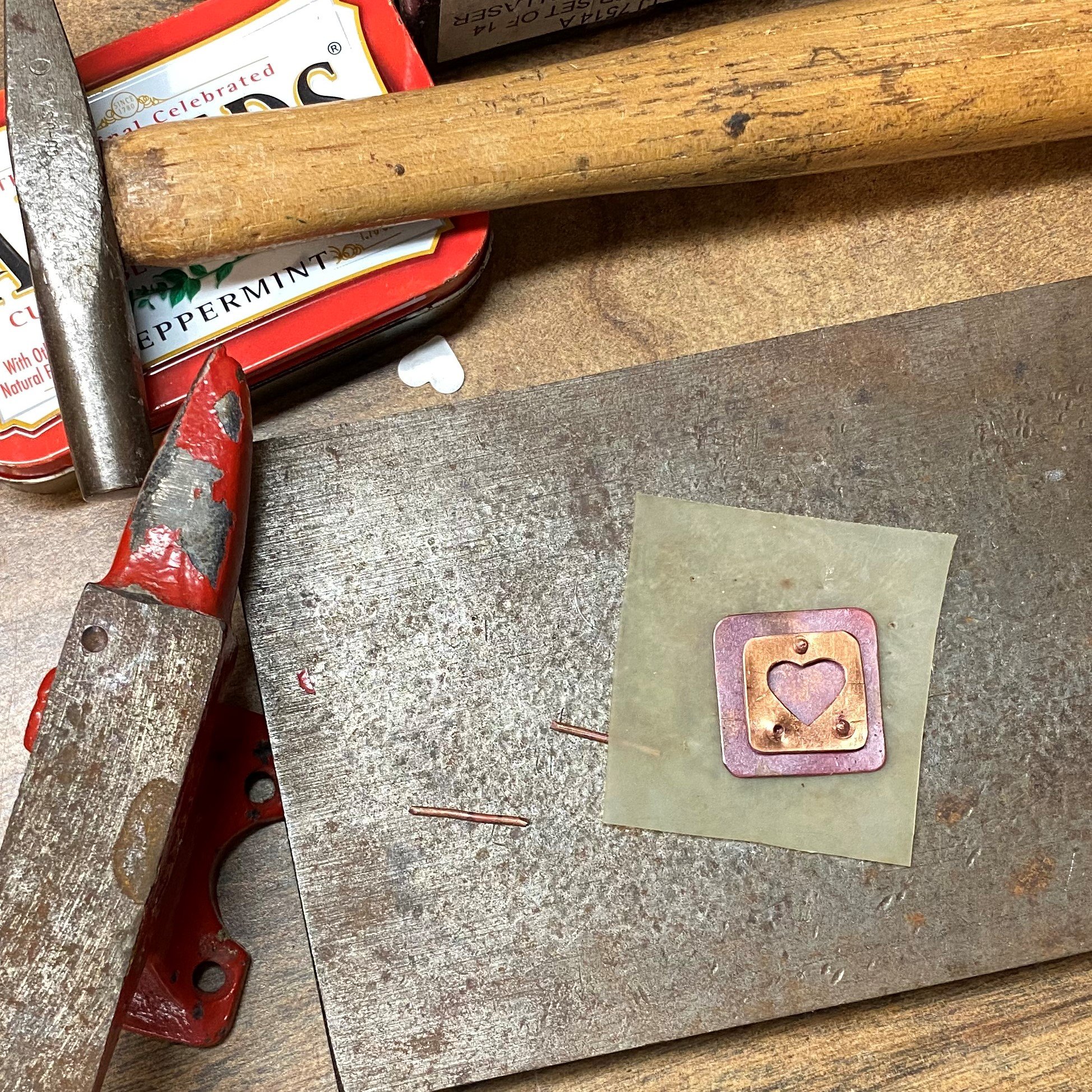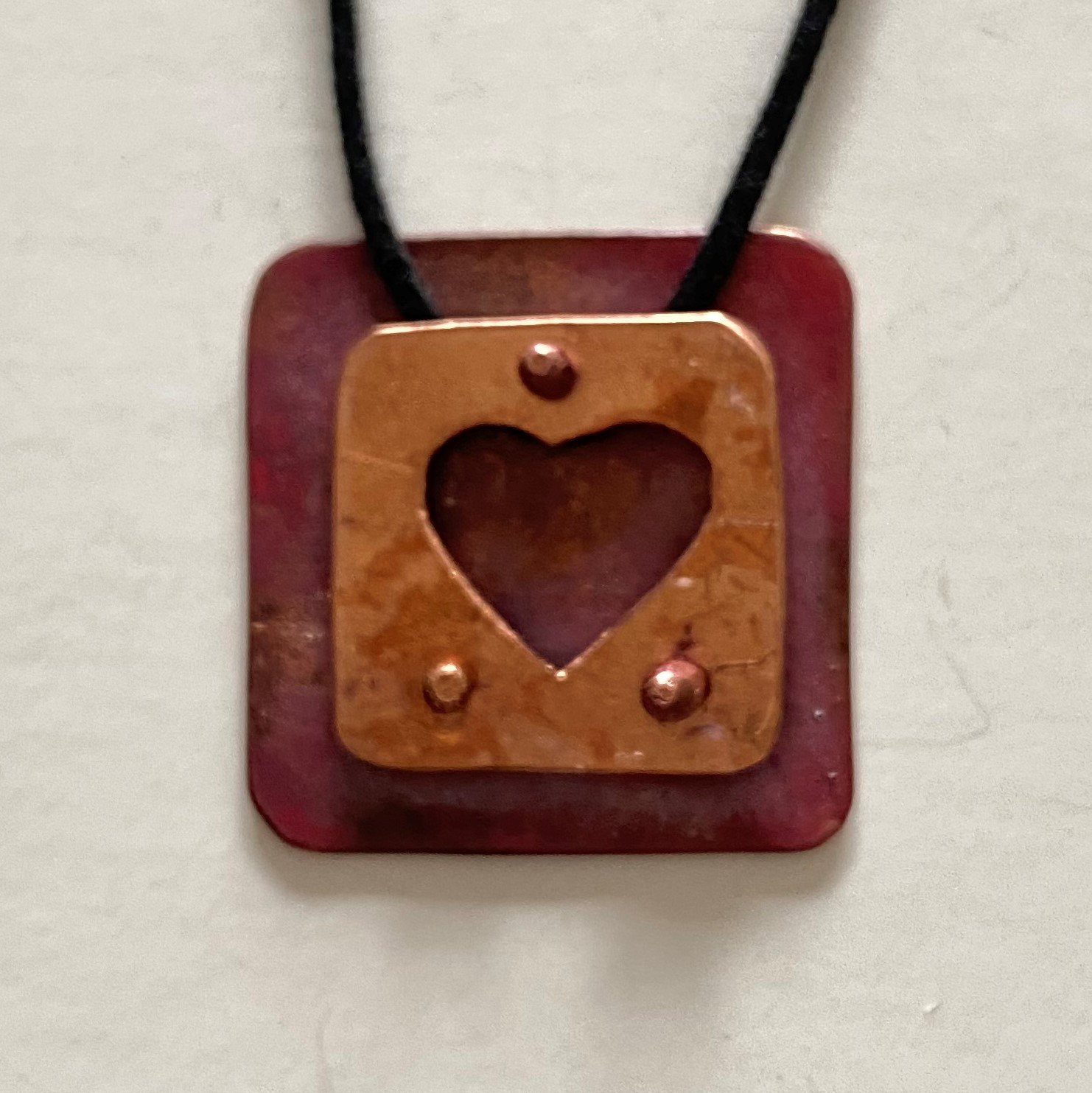This Subject is Riveting
In my last post you saw jewelry that I am experimenting with by riveting unusual materials, such as recycled plastic. Riveting is one of the oldest techniques in metal work.
Riveted Bracelet
Riveting is a process in jewelry making that involves a pin of metal, and a hammer. The hammer spreads the end of the pin over the metal (or other material). One end of the pin already has a head, as a nail or tack does. You can also ball the end of a piece of wire to form the head by heating it or hammer it to spread. The other end of the pin is hammered to form another head on the opposite side of the piece. Rivets can hold layers in place, or they could be purely decorative. You can also use a pop riveting gun for a larger rivet or more industrial look.
Just in case you were wondering, these steps are necessary to successfully make rivets by hand:
The pin should be soft, making it easy to spread the end. Annealing (heating) the metal accomplishes this.
A hole should be drilled or punched through the layers. The hole must be exactly the size of the pin’s diameter.
The length of the pin is also important. The end to be hammered must extend above the metal exactly one and a half times the diameter of the pin. Too short and the layers come apart, too tall and the end falls over instead of making a nice flat surface.
The holes in each layer must be lined up exactly. Some of the pieces I made had layers separated by tubing. It is especially important for the holes to be aligned when using this technique. If the above isn’t met, the last rivet won’t fit through the holes. Also, the piece will be crooked and sloppy.
And that’s how it’s done! There are several great videos online if you want to know more and make your own. This is one I like that covers the finer points: https://www.youtube.com/watch?v=2ekH4mzNgy8






